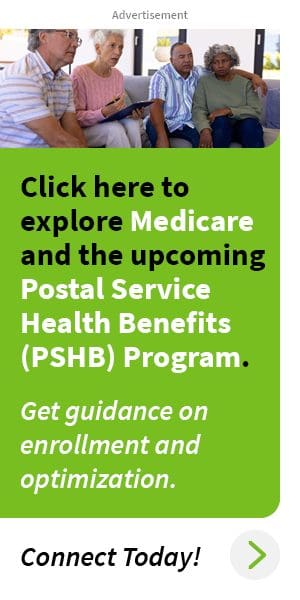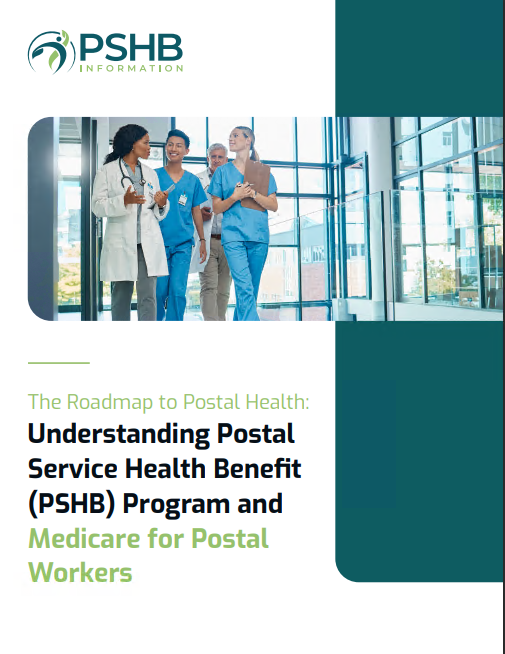Key Takeaways
- The new PSHB system offers USPS employees a streamlined way to access health benefits tailored to their unique needs.
- Choosing the right PSHB plan involves evaluating personal healthcare needs, understanding available options, and considering coverage changes starting January 2025.
Choosing the Best PSHB Plan for Your Needs: A Guide for USPS Employees
Starting January 2025, Postal Service Health Benefits (PSHB) plans will replace the existing Federal Employees Health Benefits (FEHB) program for USPS employees. This change is part of the larger Postal Service Reform Act of 2022, which aims to offer USPS employees and retirees health insurance plans better aligned with their needs. Understanding the new PSHB program is crucial for making informed decisions about your healthcare coverage, especially given the distinct differences from the previous FEHB system. This guide will help you navigate the transition, select the best PSHB plan for your needs, and understand the essential elements of the new system.
Understanding PSHB: What’s Changing?
The transition from the FEHB to the PSHB system marks a significant change for USPS employees and retirees. The PSHB plans are specifically designed to cater to the unique needs of USPS employees, with a focus on providing more tailored health coverage options. Starting in January 2025, all USPS employees and retirees will need to enroll in a PSHB plan, with existing FEHB plans no longer available.
Key Changes Under PSHB
-
Eligibility Requirements: Unlike the FEHB program, which was available to all federal employees, the PSHB is exclusively for USPS employees and retirees. This change is intended to create a more specialized and effective healthcare system for those within the Postal Service.
-
Medicare Integration: A critical component of the PSHB is its integration with Medicare. USPS retirees aged 65 or older will be required to enroll in Medicare Part B to remain eligible for PSHB coverage. This shift emphasizes the importance of understanding how Medicare and PSHB will work together to provide comprehensive healthcare coverage.
-
New Plan Options: The PSHB program introduces a variety of new plan options that cater specifically to USPS employees. These plans are expected to offer more flexible coverage options and potentially lower out-of-pocket costs, although specific details will vary by plan.
How to Choose the Right PSHB Plan
Selecting the best PSHB plan requires careful consideration of several factors, including your healthcare needs, financial situation, and future health risks. Here’s a step-by-step guide to help you make the best choice.
1. Assess Your Healthcare Needs
Start by evaluating your current healthcare needs and anticipating any changes in the future. Consider the following:
-
Frequency of Healthcare Services: How often do you visit doctors or specialists? If you have chronic conditions or require regular medical care, a plan with lower copays and broader coverage might be more suitable.
-
Prescription Drug Needs: Review your current medications and ensure that any PSHB plan you consider provides adequate coverage for your prescriptions. Some plans may offer better drug coverage or lower copays for certain medications.
-
Preferred Healthcare Providers: Check if your preferred doctors and healthcare facilities are within the network of the PSHB plans you’re considering. Out-of-network care can significantly increase your out-of-pocket costs.
2. Understand the Available Plan Options
Once you have a clear understanding of your healthcare needs, compare the different PSHB plans available to you. Pay attention to the following aspects:
-
Coverage Details: Each PSHB plan will offer different coverage levels for services like hospital stays, specialist visits, and prescription drugs. Make sure to compare these details carefully to ensure the plan meets your needs.
-
Premium Costs: While avoiding specific dollar amounts, consider the general cost structure of the plans. Lower premium plans might have higher deductibles or copays, so it’s essential to balance these costs against your expected healthcare usage.
-
Out-of-Pocket Maximums: This is the most you will pay in a year before your plan covers 100% of your costs. Plans with lower out-of-pocket maximums might be more expensive upfront but could save you money in the long run if you have significant healthcare expenses.
3. Consider Medicare Integration for Retirees
For USPS retirees aged 65 and older, Medicare will play a crucial role in your healthcare coverage. When choosing a PSHB plan, it’s essential to understand how it integrates with Medicare Part B:
-
Medicare Part B Enrollment: Enrollment in Medicare Part B will be mandatory for retirees who wish to continue their PSHB coverage. Make sure to budget for the Medicare Part B premium in addition to your PSHB plan premium.
-
Coordination of Benefits: Some PSHB plans may offer better coordination with Medicare, potentially reducing your out-of-pocket costs. Look for plans that complement Medicare coverage effectively, ensuring you receive the best possible care without unnecessary expenses.
4. Evaluate Financial Considerations
Healthcare costs can be a significant part of your budget, especially in retirement. When choosing a PSHB plan, consider the following financial factors:
-
Total Annual Costs: Beyond just premiums, calculate your total annual healthcare costs, including deductibles, copays, and any other out-of-pocket expenses. This will give you a better picture of your potential financial commitment under each plan.
-
Healthcare Savings Accounts: Some PSHB plans may offer Health Savings Accounts (HSAs) or other tax-advantaged savings options. These accounts can help you save for future healthcare expenses while reducing your taxable income.
-
Long-Term Costs: Consider how your healthcare needs might change as you age and whether the plan you choose will continue to meet your needs. Plans with stable premiums and benefits over time can be a wise choice for long-term financial planning.
5. Seek Additional Support and Resources
Making the right choice for your health coverage can be challenging, especially with the new PSHB system. Fortunately, there are resources available to help:
-
Licensed Insurance Agents: Contacting a licensed insurance agent can provide personalized advice tailored to your specific situation. They can help you compare plans, understand Medicare integration, and navigate the enrollment process.
-
USPS Resources: The USPS is expected to provide educational materials and support to help employees transition to the new PSHB system. Keep an eye out for official communications that can guide your decision-making process.
-
Online Tools: Use online comparison tools to analyze different PSHB plans side by side. These tools can help you see how each plan stacks up in terms of coverage, costs, and benefits.
What to Expect During Enrollment
The PSHB enrollment process is expected to mirror that of the FEHB program, but with some key differences. Here’s what you need to know to ensure a smooth transition:
Open Enrollment Period
The PSHB open enrollment period is anticipated to align with the federal benefits open season, typically held in November and December each year. During this time, you’ll have the opportunity to compare plans and make your selection for the upcoming year. It’s important to review your options carefully during this period, as changes made outside of open enrollment are usually only allowed in specific circumstances, such as a life event or change in employment status.
Automatic Enrollment for Some
If you’re currently enrolled in an FEHB plan and take no action during the PSHB open enrollment period, you may be automatically enrolled in a comparable PSHB plan. However, it’s always a good idea to actively review your options to ensure the plan you end up with is the best fit for your needs.
New Retirees
For those retiring from USPS after January 2025, the PSHB enrollment process will be part of your retirement planning. Make sure to explore how your plan options might change as you transition from active employment to retirement, and how Medicare will integrate with your new PSHB coverage.
Preparing for the Future with PSHB
As the PSHB system is new, it’s crucial to stay informed about updates and changes that may occur as the program is implemented. USPS employees and retirees should expect ongoing communications from both the USPS and plan providers as the 2025 start date approaches.
Taking proactive steps to understand your options, assess your needs, and seek guidance when necessary will ensure you choose the best PSHB plan for your circumstances. With the right preparation, you can navigate this transition smoothly and secure the healthcare coverage that best supports your health and financial well-being.
Planning for Your Health in 2025 and Beyond
The transition to PSHB is a significant shift for USPS employees and retirees, offering new opportunities to tailor healthcare coverage to individual needs. As the 2025 implementation date approaches, staying informed, actively participating in the enrollment process, and seeking expert advice will be key to making the best possible decision. By carefully considering your healthcare needs, understanding the new plan options, and evaluating how PSHB integrates with Medicare, you can choose a plan that supports your health both now and in the future.
Contact Information:
Email: [email protected]
Phone: 6026285580









